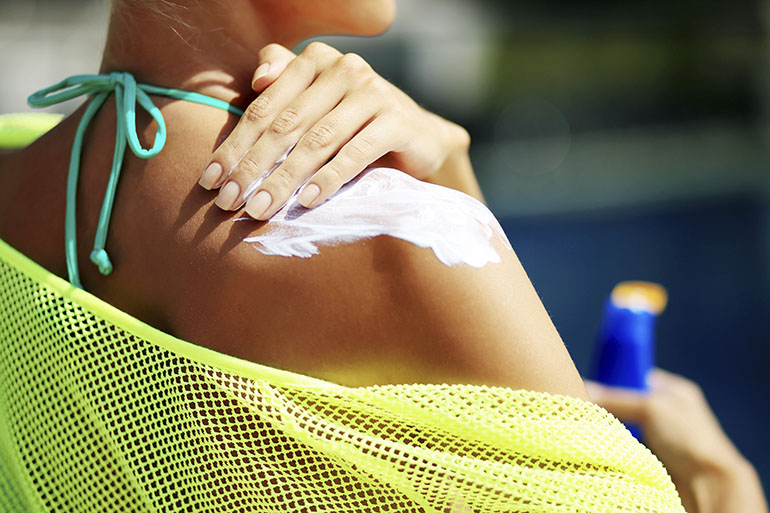When it comes to consumers choosing sunscreen, they are often drawn to a product’s scent, texture and, of course, performance, according to a study published Wednesday in JAMA Dermatology. It also found that, in many instances, these sunblocks don’t measure up to the standards recommended by the American Academy of Dermatology.
The AAD recommends sun protection products contain broad spectrum coverage, an SPF of 30 or higher, and water or sweat resistance. But four out of every 10 products fell short of the recommendations.
Steve Xu, one of the study’s primary authors and a dermatology resident at Northwestern University’s Feinberg School of Medicine, said he hopes these findings spur health professionals to better tailor their recommendations by understanding what drives patients’ preferences.
“If this is a product that everyone loves, that everyone likes,” Xu said, “there should be an impetus” for dermatologists to know why people like it.
This insight is important because using sunscreen is a modifiable behavior that is proven to reduce the risk of skin cancer. But, based on the latest available data from the Centers for Disease Control and Prevention, only about 31 percent of adults in 2010 — the most recent year for which this data is available — regularly used a product with an SPF of 15 or higher.
Specifically, the researchers sought to pinpoint the characteristics and the most-cited pros and cons of highly rated sunscreens as described by shoppers on Amazon.com. Of the total 6,500 sunscreen products that were available, they evaluated reviews of the top 1 percent — the 65 products with the highest number of consumer comments. These included products for the face, for the body and for children and covered a broad range of prices — ranging from 68 cents to $23.47 per ounce.
In analyzing consumer’s observations, the researchers focused on the five most helpful and most critical, and looked for keywords including “cosmetic elegance,” “affordability,” “product ingredients” and “skin compatibility.” Products drew comments such as, “it absolutely reeks” and “not effective” to “I’m absolutely obsessed with this SPF” and “I was able to stay out at my children’s soccer games for the entire afternoon with no sunburn.”
Meanwhile, the sun-blocking agent is now incorporated into beauty products like moisturizers, foundations and lip balms. The amount of options, coupled with the consumer’s lack of knowledge about broad-spectrum and water resistance, can lead consumers astray when choosing a sunscreen, noted Roopal V. Kundu, a study coauthor and associate professor of dermatology and medical education at Northwestern University’s Feinberg School of Medicine.
Kristen Chase, copublisher and CEO of Coolmompicks.com, a parenting blog, says it is not always easy for shoppers to know which sunscreen is best. It is something that has been a topic on her blog.
She follows all the rules and does research when it comes to choosing sunscreen for her kids. She also follows guidelines about making sure her kids are protected before they leave the house and that they reapply frequently.
But Chase, who is not affiliated with the study, understands how the options, coupled with the hectic pace of family life, may lead to uninformed decisions.
“Sometimes we grab it because we see a picture of a kid on a bottle,” she said.
The wider selection also has led to the creation of more specialized products like hypoallergenic and organic sunscreens. While these specifications could appeal to consumer preferences, Xu said the extra labels may not amount to much in improving product’s effectiveness.
“This is what we have for objective performance for sunscreen,” Xu said in reference to AAD standards. “Everything after that is a matter of opinion.”
As summer brings extra rays from the sun, Xu said consumers can choose the best sunscreen by adhering to the AAD guidelines and following several tips for optimal protection:
- Apply sunscreen at least 15 minutes before sun exposure.
- Use 1 oz. — enough to fill a shot glass — of sunscreen to generously cover the exposed areas of the body.
- Reapply sunscreen at least once every two hours.







